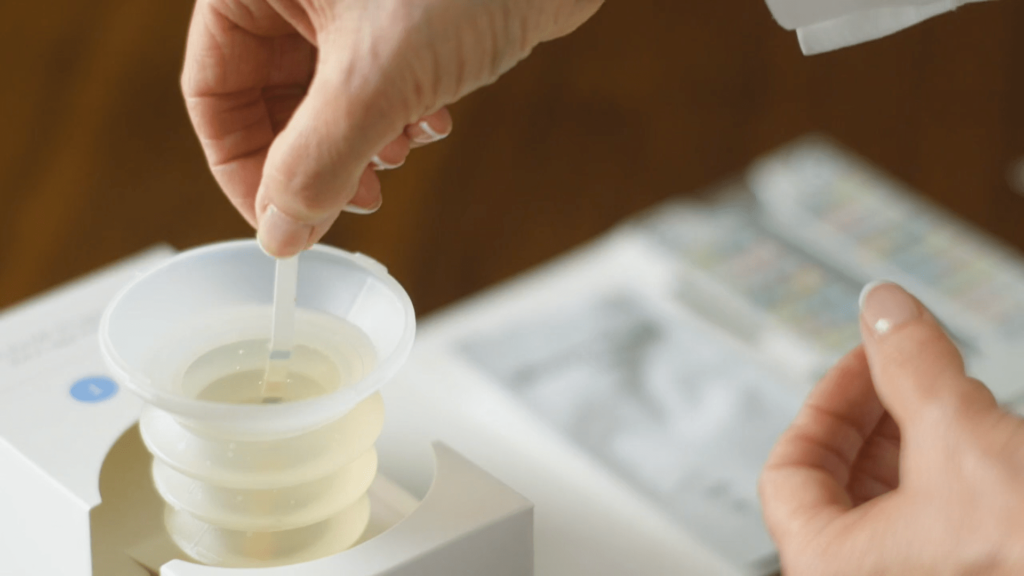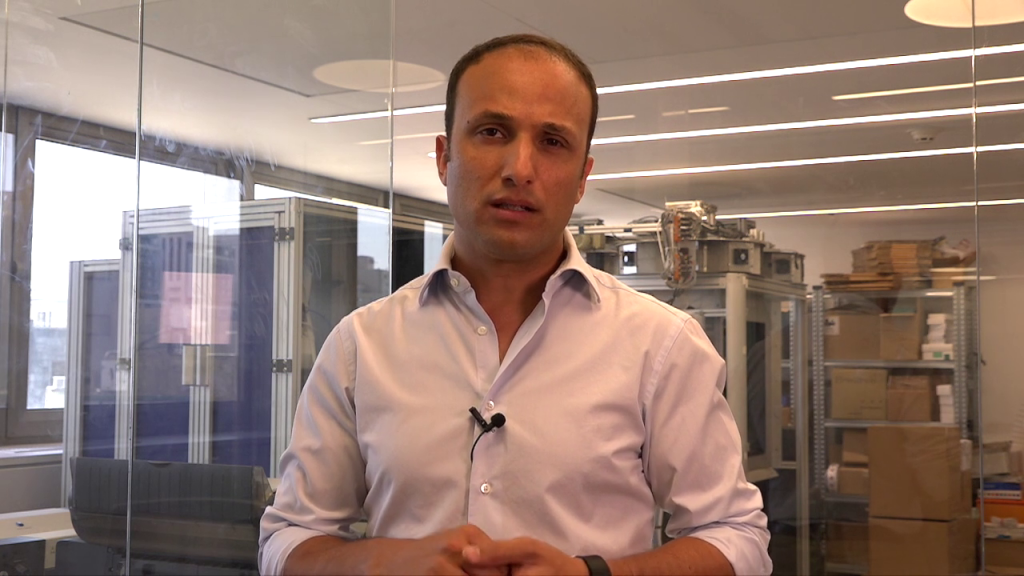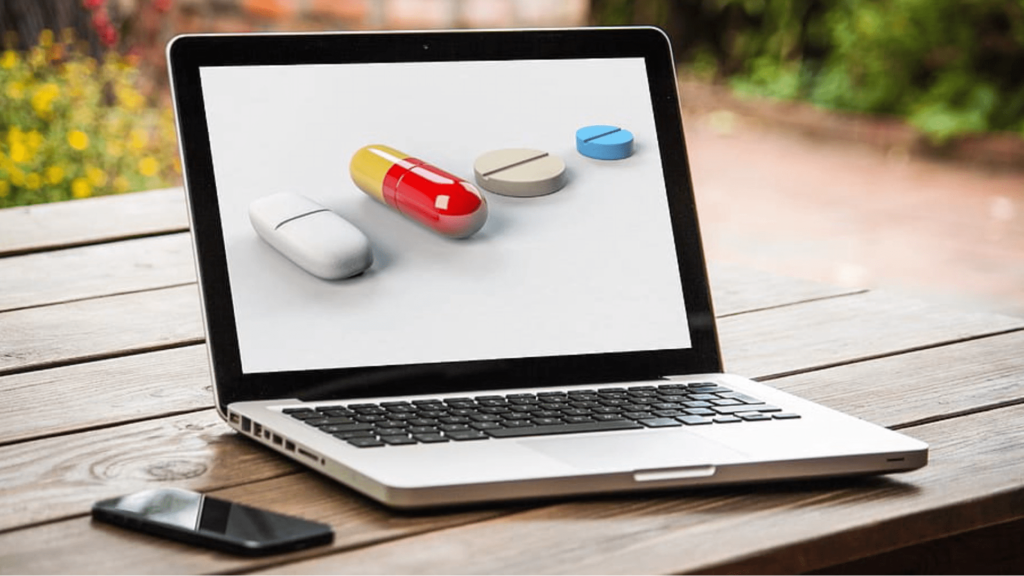Listen now:
As large parts of the world begin to cautiously reemerge from pandemic restrictions, it’s clear that the healthcare landscape has changed in dramatic ways. Patients, clinicians and organizations have shown an openness to innovation that was difficult to imagine not so long ago. But if you ask Daniel Kraft, MD—physician-scientist, prolific inventor, entrepreneur, and innovator—we’ve only begun to scratch the surface.
In our latest episode of Clinical Grade, Daniel Kraft, MD, chair for Medicine at Singularity University and founder of Exponential Medicine, takes stock of the past, present, and especially the future of healthcare. We discussed all things technology and healthcare: the trends accelerated by the pandemic, the promise of a data-driven, proactive approach to health, what the future holds for remote care—and a whole lot more.
You can listen to Clinical Grade using the player above, and subscribe on Apple Podcasts, Spotify, Google Podcasts, or wherever you get your podcasts.
Episode Transcript
Dr. Kraft, it’s great that you’re here. Your career so far has been unique and pretty eclectic. What started you down that path?
Daniel Kraft Well, I’ve always been interested in science and medicine, and was lucky to go to medical school. But when I was a Stanford medical student, I kind of liked everything. It was very hard for me to pick one field to go into. So eventually I did both medicine and pediatrics at Mass General Hospital and came back to Stanford to do hematology, oncology and bone marrow transplant, but got involved in digital health and medical devices and even aerospace medicine. I even joined the Air National Guard as a flight surgeon with F-16 and F15s. I always liked the idea of finding a problem and solving it in new ways. And so while I had sort of a traditional academic career, including in the stem cell world, about 12 years ago I got asked to chair the medicine side of Singularity University. That was an opportunity to look at the convergence of all sorts of different technologies and how they might really help us reshape and reimagine health care: prevention, diagnostics, therapy, global health. That was an accidental sort of path, but has really been an interesting journey to help catalyze and invent things that can already today shape the future of health care.
You’re the founder of Exponential Medicine at Singularity University. I think a whole lot of people learned the meaning of the word exponential over the past year or so. But what do you mean by exponential medicine?
Daniel Kraft Well, the term is around the idea that many technologies can move exponentially. Some of them just move fast. The classic exponential technology is Moore’s Law: the power of computing getting roughly twice as fast and half the price every roughly two years. And that’s why a pocket computer now has more power than a Cray supercomputer did by far 20 or 30 years ago. And we have many examples of exponentials. But many folks have the challenge of understanding that while our brains are wired linearly, many technologies move quickly and sometimes exponentially. That convergence of fast moving technologies—from Moore’s Law to A.I. to nanotech to Low-Cost Genomics to Big Data—is giving us an opportunity to really reimagine how we can do different elements of health care around the planet. And hopefully to bring care anytime, anywhere at much lower costs and have a big impact, including on health equity, on clinical trials and moving us from what we’ve done, traditionally—sick care—to a sort of an era of continuous, proactive health care.
It’s no secret that the pandemic accelerated the adoption of healthcare technology, and especially remote care—we’ve certainly experienced that firsthand here at Healthy.io. But what will that mean going forward? And is there a chance that as life goes back to normal, people will prefer to go back to pre-pandemic forms of care?
Daniel Kraft I think one of the things that’s really accelerated the idea of remote care, virtual care, the idea of hospital to home—or hospital to homespital—is the idea that in the old form of thinking care happens in the four walls of the hospital or the E.R., or the intensive care unit. And a lot of what we keep people inside of the hospital for, or will delay sending them home, is to collect some data. It might be to measure their temperature or their vital signs. And now we’re at the sort of convergence point where a lot of that technology has been, in this exponential realm, digitized, democratized, demonitized, the fact that you can wear a little patch that can stream an intensive care unit level of data through your smartphone anywhere in the world. Or from your simple wearables you can track your sleep and how you’re doing after you’ve been sent home from a COVID infection or maybe after a total hip replacement. Are you walking more, walking less? Or even the idea of underwearables, little internet of medical things that can go into each pair of your underwear, that automatically sync with your phone and can track not just your steps and respiratory rate, but your respiratory status. So all these new forms are starting to align. And so that really has accelerated the ability to do virtual care. The genie is out of the bottle. It’s not going to go back to where it was. A lot of care still does need the hands on, the face to face, the interaction. But it can be blended more with virtual care, on everything from mental health to diagnostics to complex chronic disease management.
You’re very much an early adopter of technology—but most people are not. There’s a learning curve, an adoption curve. Even at the height of the pandemic it was still something of an uphill battle. What factors need to be in place to close that deal with the public at large?
Daniel Kraft I think the future of medicine is not really about the technology. A lot of the technology people call gadgets or toys or gizmos have been around sometimes for several years. The trick is getting them into the workflow and aligning the incentives for the clinician. So you might have, launched a year or so ago, the blood pressure cuff connected in a watchband. Or there’s many sort of blood pressure cuffs you might want to be able to prescribe to a patient with hypertension. Is that data going to flow back to the nurse, the doctor, the health care system? Are they going to want to log in and look at it? They want to look at all the numbers? No, they want to see the trends or get an alert when someone’s consistently too high or too low. So it’s not about the technology. It’s often how you integrate that. And also the data. We now have exponential amounts of data from our Internet of medical things. How do you make that not just data, but actionable information that the patient can use—or the caregiver, or the hospital system, or the pharma company? The key thing that’s been catalyzed by COVID is the connecting of the dots. We’re starting to force some of these functions to happen. The fact that we can do remote patient monitoring. In the US, there are new reimbursement codes. The fact that telemedicine has been relaxed a bit in terms of where and how it can be done, and how it’s being paid for. So I think on the exponentials, as we mentioned, the potentials get better and better. The trick is having the regulatory, the reimbursement, the payers catch up with where the technology already is. And that’s part of the challenge and the opportunity.
Maybe a little bit more about that potential. Depending on the technology we’re using, each of us could be giving off thousands and thousands of data points, possibly more, which could be turned into a coherent snapshot of our health. On a population-wide scale we’re talking about billions of points that can be translated into new discoveries and clinical recommendations. So how do we connect these dots?
Daniel Kraft We’re in this fascinating age of “omics”. We can measure our base genome, but now we can also measure our phenome or digitome, our behaviorome. All these sort of things that can be collected electronically. Our wearables today can measure almost every element of our physiology and behavior. And you don’t even need wearables now. You’ve got your voice, which can be a biomarker for health, to pick up everything from mental health changes to neurologic disease. The sound of your voice or cough can help detect COVID or croup. We often haven’t known what these signals have meant. But now our exponentially better smartwatches can measure far beyond just our steps. They can tell who’s wearing them, what kind of gait, the changes, sleep can be measured. Not just your heart rate, but resting heart rate, heart rate variability. So bottom line, it’s overwhelming all the things we can measure. From our basic physiology to even our sociome—who and where are we around? Is it pollution? Is it hot? Is it cold? So the point now is we can collect this data. The trick is getting meaning from that. I think as we learn more about what’s normal—and normal for you, your baseline is different than my baseline—we’ll start to see these changes. Like your resting heart rate is going up, or your respiratory rate is going up. Maybe you have an early infection or early heart disease. And that might mean we can intervene early. Most of us are familiar with the check engine light in our car, but we don’t know all the sensors that fed that check engine light. It doesn’t matter, but hopefully that triggers us to plug into the mechanic. Similarly, with our own health, which is more complicated than a car, but as we understand our own baseline in the data, our normal and abnormal, that’s going to help give us that early warning, whether it’s for an infectious disease, cancer, a neurologic issue, a mental health issue, and then hopefully intervene early. It could be as simple as finding a urinary tract infection early, or a problem with your kidneys early, or your heart, or your lungs, or anything else. And we’re starting to really build those databases and build the systems on top that can gain the meaning and hopefully crowdsource that and catalyze new knowledge around the world.
So most people probably see these wearables as quantified self, something cool to have, but don’t understand the ramifications for early detection of chronic disease or even cancer, which is a real revolution, right?
Daniel Kraft Sure. We’re probably both data geeks and we look at our steps and sleep, meals and have our connected scale, that’s all great. There’s a lot of issues around who owns that data—it should be your data—keeping it private. That’s quantified self. But the big shift that’s starting to happen is going from quantified self to quantified health, where that data, when you opt in, can now stream to your doctor, your nurse, your public health system, so that they can look at your biomarkers of health and optimize wellness and prevention and longevity, or diagnose that disease before you even know you have it. Whether cancer can be picked up by certain digital signals potentially as well. All the way to managing disease, something like Parkinson’s, or there might be a tremor that can certainly be measured by a smartwatch and then your doses adjusted, or many other variables. So it really is this time where we’re going to move from the data geeks to where this becomes pretty much normal. There are definitely challenges about who owns the data. How do you sift through it? How do you share it, do you use blockchain to keep it secure? But it gives us a real new lens—if the regulatory bodies and the payers and the many health care systems around the world can catch up—to really accelerate what we can do.
This gets us back to what you were saying earlier, that what we call health care isn’t really health care—it’s sick care. Can you talk about some of the differences between the two?
Daniel Kraft Yeah, the way most of our health care systems are set up is to manage sick care, to manage disease—not really to keep you healthy. In the old days in China, the town doctor got paid more if his patients were healthy. Wouldn’t that make sense? And so our sick care model is based on the fact that most of the data traditionally is only collected when you go visit the doctor once a year. That very intermittent episodic collection of data. That random time for your primary care visit. Or when you end up in the urgent care or E.R. And so that leads to our reactive sick care model. We tend to wait for the patient to present with the more advanced disease, whether it’s cancer, a stroke, a pandemic, advanced renal disease, diabetes, etc. So the incentives are for hospital systems to have their beds filled and to do more tests and more biopsies and more procedures. We’re starting to see those incentives shift in many parts of the world, whether it’s a socialized health system like NHS or a Kaiser, versus the fee for service. And so as we shift the incentives, health care systems, clinicians, patients themselves, are going to be much more on top of this true health care side. Or even self care—we’re going from health care to self care, where we’re able to take more ownership over our health, do more proactive things. Whether that’s optimizing our diets or seeing our sleep patterns or other elements, to really shift the needle, to spend more of our time, energy and dollars on keeping us healthy and lead to not just long lives. You know, we all say you want to live to 120, but most of us don’t want to feel 120. We want to make 120 and the new 60. To increase our health span, I think is what we all really are striving for, both for individuals and for communities around the world.
So how do we shift those incentives. Is this a question of leadership? These are huge ships that are very difficult to turn around. So both in terms of big governmental organizations and also private health care, how do we help them adapt to the more proactive approach?
Daniel Kraft It’s kind of like politics. All politics is somewhat local and all health care is somewhat local. Here in the United States where I’m speaking from we have thousands of health care “systems”. Some are more functional or dysfunctional than others. It’s not one size fits all, just like medication can’t be. And so I don’t think there’s only one prescription. But one of the lessons from my Exponential Medicine conference is we can learn from each other, what works in Tel Aviv or Rwanda or Japan and Tokyo. We can learn and cross fertilize faster, just like we’re learning in the COVID pandemic, elements that are globalizing faster. And I think it does take leadership and policy elements to ride a bit of that exponential rail. Because we’re still stuck with regulatory systems that were built sometimes in the pre-digital world. It might be HIPAA, which is well-meaning but doesn’t really work as well in our digital connected age. It might be ethics that are out of date in the era of CRISPR for gene modification, or where A.I. and cameras can detect elements of your physiology or behavior. So I think part of it is having a little bit of a forward looking lens and future proofing a little bit as you design new approaches, but also to realize that things take a bit of time, particularly in health and medicine, and to use design thinking as well, to not just assume because you’ve invented a new device, app, drug platform, that it’s going to be utilized. You need to understand the perspective of the patient, the physician, the payer, the politics and put that in a local context and hopefully allow that to spread as a success in a certain initial market.
This whole conversation has been forward looking, but finally, looking ahead, what are some of the healthcare innovations you’re truly most excited about?
Daniel Kraft One of the crazy, amazing examples of this convergence—A.I. meets smart cameras meets diagnostics—is the ability to take what used to be a not always expensive, but not easy to do, test like a urinalysis. And now to just do that with a smartphone at home in two minutes in the privacy of your restroom is pretty magical. And again, the technology may have existed in a basic form a few years ago, but to connect all those dots and to prove it out and to get it paid for and have that information flow to the doctor, and then the pharmacist, or the health care system, and to make that understandable to the patient and layering all those complex pieces together. It’s pretty exciting that what was possible 10 years ago is really coming together to actuality. And so I think some of the examples of the Healthy.io type model, where it’s completely reinventing what used to be analog, really making it digital, almost magical and easier, and dramatically improving the outcome and the cost level and the benefit—particularly if you pick up early renal disease in a diabetic patient. You can make a huge difference in many other applications going forward.











